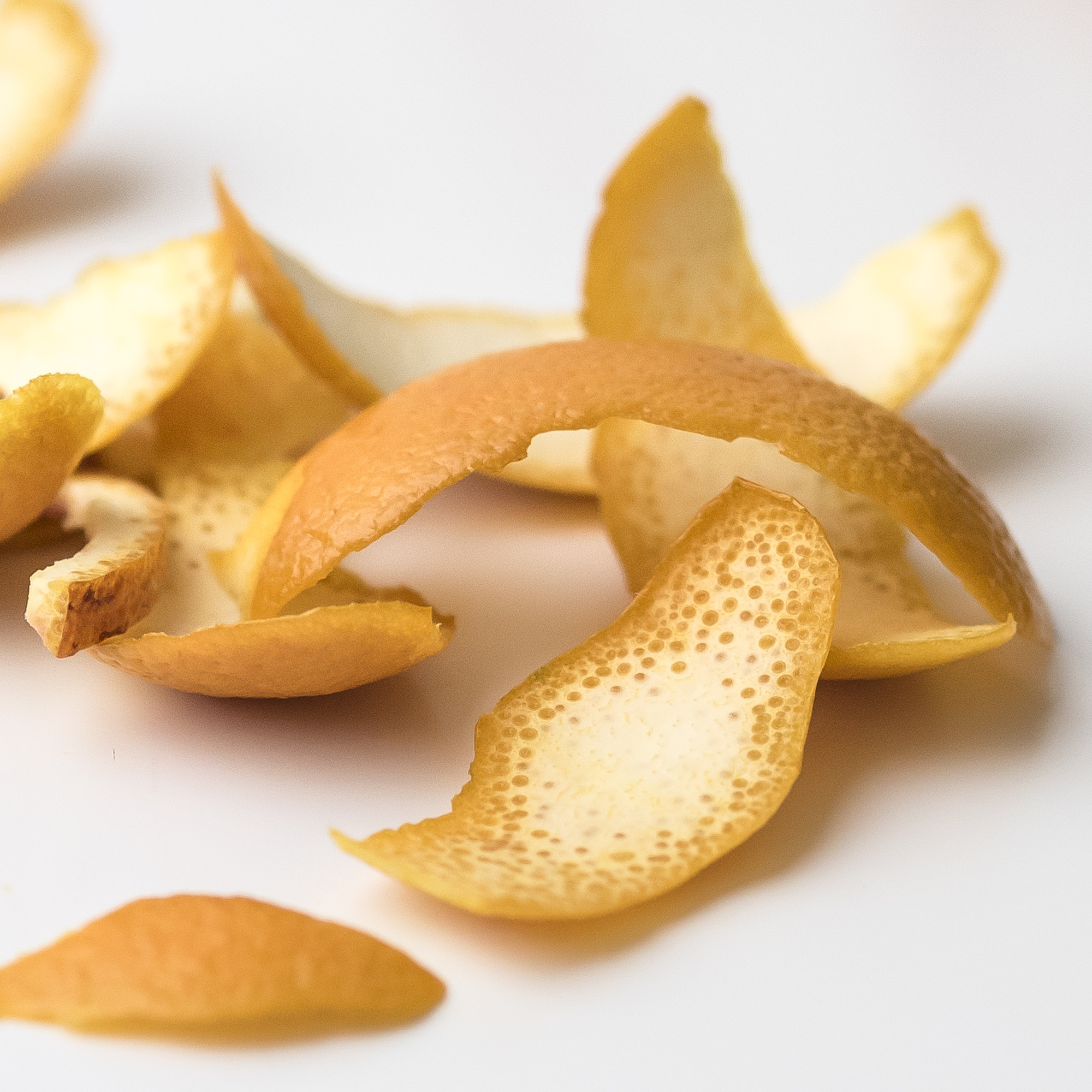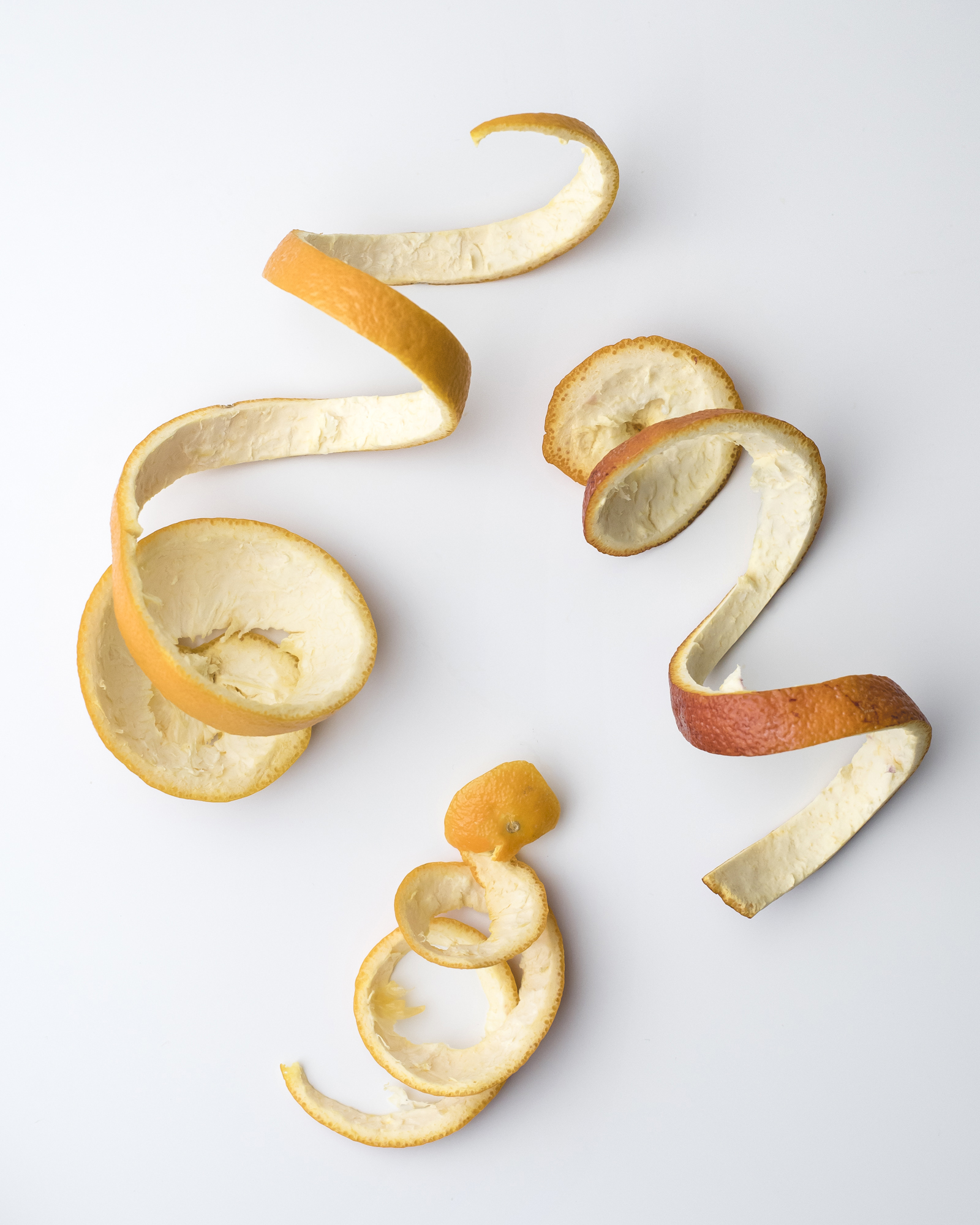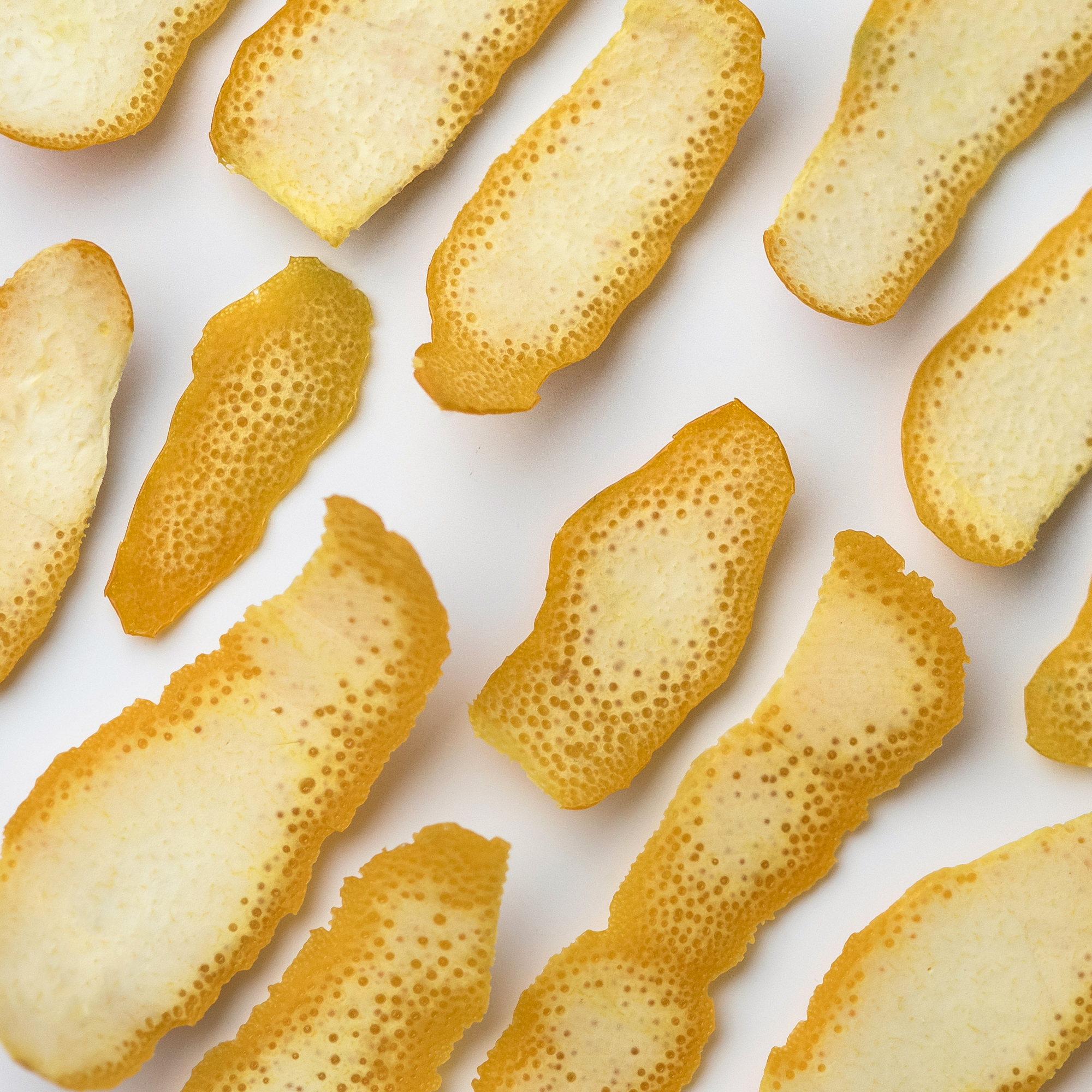How Orange Peels Are Saving The World
Though they’re usually tossed in the trash, orange peels are rapidly becoming a superpower in the sustainability sphere. The trend towards reuse rather than new design to address problems is a flourishing one in the world of eco-conscious design– particularly with regard to finding creative ways for repurposing food waste. From beer made with bread to bars made with beer, both new and old food companies are rushing to capitalize on otherwise squandered resources.
Of course, the transition from food waste to new food product isn’t that big a leap to make; it’s still all food, after all. But in the course of the last few years, the reuse of food waste has begun to branch out into other sectors– and no one is doing it better than orange peels.
Seriously–at this point, we’re probably only a year away from the epic superhero origin story of orange peels. (You think I’m kidding but if they’ll make an emoji movie, they’ll make anything. These are the times we live in, folks.)
While orange peels don’t seem like they would add up to much (it’s not like you’re sitting down to eat five oranges in a row–or maybe you are, in which case: live your truth), they’re actually a sizable source of waste. Since the 1980s, orange production has continued to grow across the world, and in 2014, orange production clocked in at 68,925,200 tons, with much of that figure being used to make products like jams, marmalades, and juices–all of which result in the waste of orange peels at a massive scale (around 3.8 million tons of waste a year).
Fortunately, science has answered with a myriad of solutions. Like many other food waste products, orange peels are being eyed as a potential biofuel. Leading the research is the Orange Peel Exploitation Company, whose acronym amusingly shortens to OPEC (better known throughout the world as the acronym for the ever-controversial Organization of the Petroleum Exporting Countries).
With researchers based at universities across the world (in Sao Paolo, York, Cordoba, and beyond), the project is investigating the feasibility of bio-refinery for orange peels, with the potential to create bio-ethanol biofuel, among other products.
In 2014, the world produced around 68,925,200 tons of oranges, with much of that figure being used to make products like jams, marmalades, and juices– all of which result in around 3.8 million tons of orange peel waste per year.
In a more restorative capacity, a Princeton project started in the mid-1990s involved purposefully dumping 1,000 truck loads of orange peels (about 12,000 tons) onto a barren pasture in a national park in Costa Rica, but a year after the project began, it was shut down, after a lawsuit was filed claiming the act constituted the degradation of national park.
Fifteen years later, the land was revisited while reviewing potential sites for a different study, and researchers discovered that in the intervening years– independent of any additional intervention– there had been a 176% increase in biomass across the seven acres, which restored a previously lush forest to its original splendor. In addition, the researchers found that the area where the orange peels had been deposited now boasted richer soil, more tree-species richness, and more forest canopy closure than nearby areas.
“An awful lot of [environmental] problems can be alleviated if the private sector and the environmental community work together. I’m confident we’ll find many more opportunities to use the ‘leftovers’ from industrial food production to bring back tropical forests. That’s recycling at its best,” co-author of the project, David Wilcove, affirmed at press time.
In an effort to further reduce the footprint of environment-threatening industries, staff at AIMPLAS (a Spanish plastics-technology institute) are also exploring the use of orange peels as a potential bioplastic. (Spain is the leading producer of oranges in the European Union, with 3,800,000 tons per year produced.) In partnership with the Spanish government and a wine/juice specialist, AIMPLAS hopes to have several orange peel-based products developed by the end of 2018, including plastic bottles and a replacement for the aluminum used in certain railway technologies.
Staff at AIMPLAS (a Spanish plastics-technology institute) are also exploring the use of orange peels as a potential bioplastic.
Elsewhere in Spain, researchers from the University of Granada have also engineered a wastewater filtration method that uses the peels of oranges and grapefruits. The peels are able to filter out heavy metals and the process can be extended to a larger scale.
“The results show a great potential for the use of [wasted citrus peel] materials as adsorbents capable of competing with commercial activated carbon for the adsorption and recovery of metals present in wastewater, in a way that it could be possible to carry out sustainable processes in which products with a great commercial value could be obtained from food industry residues,” Romero Cano, a researcher on the team, revealed.
The use of orange peels, however, isn’t only limited to environmentally-oriented topics; orange peels have also shown immense promise in their ability to be transformed into other materials, particularly textiles for the fashion industry.
Earlier this year, Ferragamo released a line of scarves made with citrus fiber, a fitting homage to Italy’s obsession with oranges. Along with a few other leftover fruits, orange peels are being transformed into vegan leather, courtesy of a cohort of undergraduate design students calling themselves Fruitleather Rotterdam. The group is currently branching out from their fashion roots to explore how their innovative leather can be incorporated into the interior and furnishing industry.
The medical sphere has also taken an interest in orange peels, having discovered they are an incredibly rich source of phenolic antioxidants that show promise in combatting chronic disease. (Phenolic antioxidants deal specifically with inflammation and gene-regulation.)

Fortunately, you don’t have to have a degree from MIT to make use of orange peels in all their generative capacities. For those curious about at-home applications of orange peels, researchers have noted that orange peels help lower cholesterol, and are also rich in limonene (an anti-carcinogenic phytonutrient). Peels also help stabilize blood sugar levels and encourage a healthy gut biota. In our office, we regularly use a cleaner made with lavender, sage, and lemon peels– but orange peels can easily be swapped in.
Many gardeners also use orange peels as way to combat the uninvited encroachment of slugs, and some people use them to make citrus planters for small seedlings. Orange peels themselves can also be candied and used as garnishes for desserts and asian stir-fries, just like candied lemon peel. You can, of course, also compost them yourself, and bring the whole process full circle.
Interested in learning more waste mitigation techniques? Read our story on how to go plastic-free or check out these 9 companies turning food waste into delicious snacks.





































